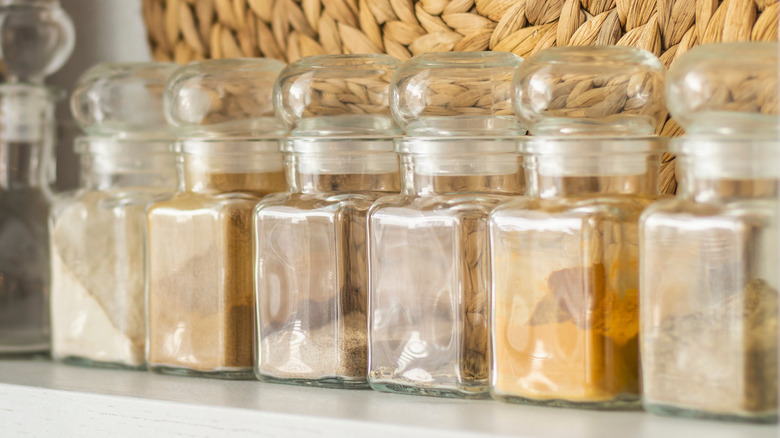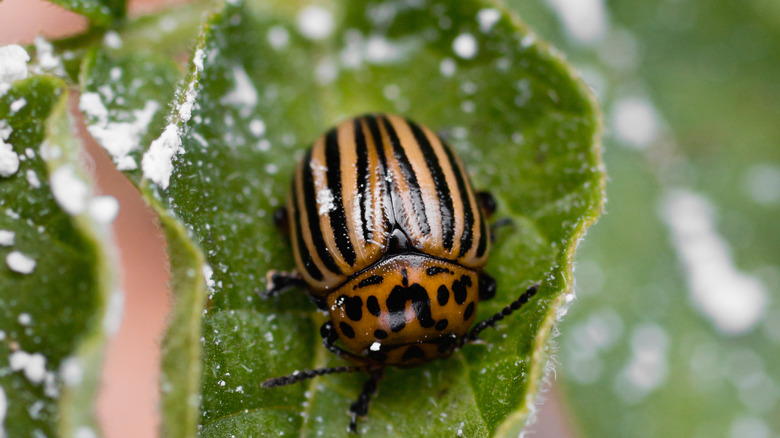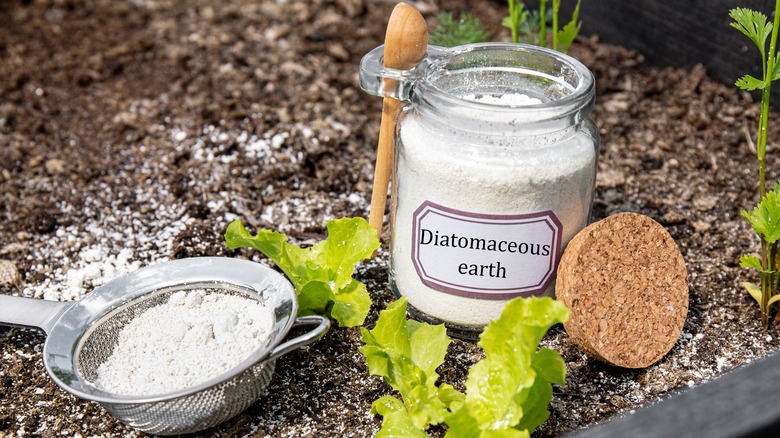Your Old Spice Jars Are The Secret To A Pest-Free Yard. Here's How
Are insects and pests wreaking havoc on your yard and garden? While you may be tempted to break out some dangerous chemical pesticides, doing so isn't the best option. There are some safer and more natural methods for ensuring a pest-free yard. Diatomaceous earth (DE) can do an excellent job of killing yard and garden pests and could be well worth using instead. DE easily takes care of common houseplant pests including aphids, scales, spider mites, whiteflies, and more.
Despite this, diatomaceous earth doesn't tend to come in packaging that allows you to spread it easily, so you'll need to find a useful applicator to place the powder in strategic locations. An old spice jar or saltshaker can work well for this purpose. Adding diatomaceous earth to a spice jar allows you to easily carry the powder around with you and sprinkle it around your yard and garden, helping you get rid of pests as conveniently as possible.
Spreading diatomaceous earth with spice jars
Applying diatomaceous earth is easy and you'll simply need to add some anywhere you want to keep insects and pests at bay. Sprinkle it on soil, in crevices around the yard, and around other areas that are prone to insect problems. You may want to create a barrier at the base of specific plants you know have been having trouble with insects.
When spreading DE, wait to do it when weather conditions are right. Diatomaceous earth needs to be dry to work, so apply it only when it's not windy or rainy. This will also help ensure that it doesn't move from the locations where you need it to be. Also, remember that you should use non-toxic food-grade DE rather than toxic pool-grade DE. Wear protective gear like gloves, eye protection, and long sleeves when spreading DE, since it can cause eye and skin irritation.
Keep in mind that diatomaceous earth doesn't discriminate and it can kill good bugs and insects as well as pests. Pollinators can be affected by DE, so you'll want to rethink using diatomaceous earth in your garden regularly. Avoid adding it to areas where you know pollinators will be, such as near flowers, and only add it to the specific areas where you're trying to prevent a specific pest infestation. It's also best to apply it early in the morning or late in the day since pollinators are more active in the morning and afternoon.
Sorting and cleaning your spice jars
You might be wondering whether you can use either glass spice jars or another type of container for this gardening hack. Fortunately, diatomaceous earth can be stored in glass, metal, and plastic and any of these will work well when sprinkling some of this powder around the yard and garden. When sprinkling DE, you can use any container that you find convenient. However, one word of warning: Be sure to keep track of what's in each spice jar you use.
When you start using spice jars for new purposes, it becomes especially important to label them correctly. Place a new label on your spice jar as soon as you fill it with diatomaceous earth and avoid storing it close to spice jars that still have spices in them. Although food-grade DE won't harm you if ingested, it may cause some irritation, especially if consumed in large amounts. It can also irritate the nasal passages if you breathe it in and irritate the skin if touched.
It's also a good idea to clean your spice jars whenever you switch their contents. This will help you stay sanitary and avoid potential issues like ingesting the wrong item or putting the wrong thing on your plants. A simple mixture of soap and water is all that's needed to keep your spice jars clean. However, make sure to use a dishcloth to fully clean and dry the inside of your jars instead of just giving them a quick rinse.


